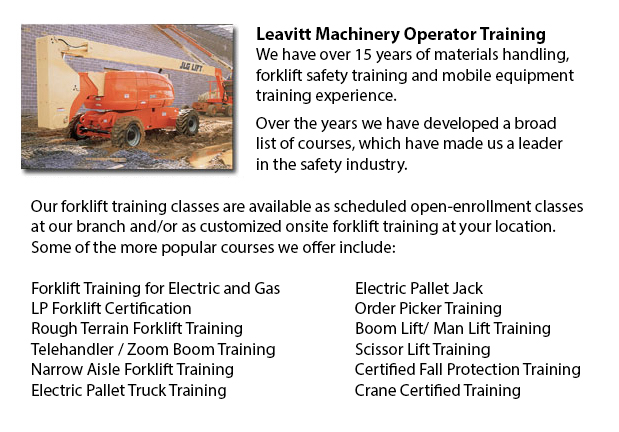
Boom Lift Safey Training Vaughan - Boom lifts fall under the kind of elevated work platform or aerial lifting device. Most normally utilized in construction, industry, and warehousing; the boom lift is really versatile that it could be used in virtually whichever setting.
The elevated work platform is used so as to allow access to heights that were otherwise not reachable using other means. There are dangers inherent when using a boom lift device. Workers who operate them should be trained in the proper operating methods. Preventing accidents is vital.
The safety factors that are involved in boom lift operation are included in our Boom Lift Training Programs. The course is best for individuals who operate self-propelled elevated work platforms and self-propelled boom supported elevated work platforms. Upon successful completion of the course, Individuals who participated will be given a certificate by a person who is authorized to confirm the completion of a hands-on assessment.
So as to help train operators in the safe use of elevated work platforms, industry agencies, federal and local regulators, and lift manufacturers all play a role in providing the necessary information and establishing standards. The most essential ways to avoid accidents associated to the use of elevated work platforms are the following: wearing safety gear, performing site assessment and checking machinery.
Important safety considerations when operating Boom lifts:
Operators should observe the minimum safe approach distance (or also called MSAD) from power lines. Voltage can arc across the air to find an easy path to ground.
To be able to maintain stability when the platform nears the ground, a telescopic boom should be retracted before lowering a work platform.
Boom lift workers should tie off to ensure their safety. The harness and lanyard tools should be attached to manufacturer provided anchorage, and never to other wires or poles. Tying off may or may not be needed in scissor lifts, which depends on specific employer guidelines, job risks or local rules.
Avoid working on a slope that goes beyond the maximum slope rating as specified by the manufacturer. If the slop goes beyond requirements, therefore the machine should be winched or transported over the slope. A grade could be measured without difficulty by laying a straight board or edge of at least 3 feet on the slope. After that a carpenter's level can be laid on the straight edge and raising the end until it is level. The per-cent slope is obtained by measuring the distance to the ground (the rise) and then dividing the rise by the length of the straight edge. Then multiply by one hundred.
-
Forklift License Vaughan
Forklift License Vaughan - Getting a forklift certification or forklift license in North America would require the trainee to do hands-on training in addition to classroom instruction. The provincial, federal and state regulatory bodies are responsib... More -
Forklift Ticket Vaughan
Forklift Ticket Vaughan - Forklifts and the pallet jack is meant for just about the same reason. They work to raise and move supplies and goods from one place to another. This however is where the comparison stops though. With the pallet jack, the be... More -
Aerial Lift Certification Vaughan
Aerial Lift Certification Vaughan - Aerial Lift Certification is for individuals who need an in-depth understanding of aerial lift safety. Operators and inspectors, supervisors, maintenance workers and construction craftsmen should perform a certific... More -
Manlift Certification Vaughan
Manlift Certification Vaughan - The Manlifts and Elevated Platforms course provides training on the rules, regulations and proper application of safe operating measures and work practices included in everyday activities for those who work making use... More -
Heavy Equipment Training Vaughan
Heavy Equipment Training Vaughan - The two most common kinds of heavy equipment training are categorized into the categories of machines; equipment that is fashioned with rubber tires or those with tracks. The tracked vehicle are heavy duty machines... More -
Boom Lift Ticket Vaughan
Boom Lift Ticket Vaughan - Boom lifts are equipment that has a platform that may be lowered or raised to different heights, thus making this piece of equipment an important necessity in a wide variety of professions. Offered in many different particu... More -
Telehandler License Vaughan
Telehandler License Vaughan - The telescopic handler or telehandler is a frequently used equipment in industrial and agricultural applications. This particular machine is the same in appearance to a forklift and also functions in a similar way, altho... More -
Scissor Lift Training Vaughan
Scissor Lift Training Vaughan - Scissor lifts have to be operated competently to be able to protect the safety of the machinery and the safety of others within the workplace. Operators who are skilled are trained to drive the particular kind of sciss... More

Forklift Training Vaughan
TOLL FREE: 1-888-254-6157
Vaughan, Ontario
forklifttrainingvaughan.com
Email Us
About Us


